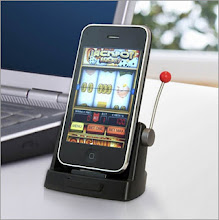Google just made its music cloud service, Google Music, available to all, and it's mostly self-explanatory: You go to music.google.com and start uploading or purchasing music that you can then listen to on your computer, or on your Android phone, Google TV, or iPhone. Just like iTunes, right? Well, not really. Maybe it's not so straightforward after all. Here are a few pointers that may help clear out some of the possible sources of confusion:
1. It can automatically back up iTunes and most other music flies.
When you set up the service, you can tell it to upload your iTunes library, your Windows Media Player library, or any file folders you designate. The service supports more file types than competitors iTunes and Amazon Cloud Player. This includes not just the MP3 and AAC formats those support, but also WMA, OGG, and FLAC. The latter are saved as 320 Kbps, even if your originals are of higher quality.
2. It's two separate sites.
Google Music is the player and library, but you buy music on the Android Market site—whether or not you ever use any Android device. From the Google Music site, you can also download an app, Music Manager, that scans your PC or Mac for music files and upload it to your cloud-based music locker. The Android Market is where you browse, preview, and purchase new music, which then appears on your Google Music pages or in your Android Music app.
3. You can't download songs to another computer unless you bought them on Google Music.
iTunes Match and Amazon Cloud Player let you download stored music to any computer or compatible mobile device.
4. Some Android devices fully support it, some don't.
There is, of course, an Android app, but that hasn't yet been updated with all the new features, and some phones and tablets still don't see music in the Android Market app yet. The whole point of Google Music is to finally give Android mobile users an equivalent to the iTunes services enjoyed by iPhone and iPad users. Google states that this will be updated within days, but it's unclear which phones and tablets' Android versions will be updated on what schedule. Some Android phones and plans, starting with T-Mobile, will even let you pay for music through your phone bill.
5. There's no official iPhone app, but music. google. com works on iOS devices.
The Google Music site is even formatted well for iPhone screens. You can listen to any music in your Google Music cloud locker and even buy music from the separate Android Store, but you can't back up music on the iOS device to Google Music. Nor can you download music bought in the Android Music store to the iPhone directly (see #1 for how to do it indirectly).
6. There's tons of free music.
But you need to give Google your credit card information even for the free stuff. This could be a concern to those who worry about Google profiling them.
7. You can only share purchased songs to Google+.
If you do so, anyone following your Google+ profile will be able to stream the full song once. A Buy button is prominently displayed. Songs you uploaded but didn't buy at the Android Market don't get this treatment.
Start Your Library
There are two ways to start building your Google Music library: By downloading, installing, and running the Music Manager, or by buying it from the Android Market—even if you never touch an Android device.
Manager Wizard Login
After you install the Music Manager, you'll start by logging into this setup wizard. Your first choice is where Google should look for music to upload. You also can send Google crash reports automatically if you want to help them improve the service.
Music Manager
Double clicking the tray icon brings up the Music Manager interface, where you can add and remove folders for uploading.
Where to Keep Music
You can have Google Music upload your iTunes library, Windows Media Player library, or any folder of songs.
Music Manager Advanced Tab
Here you can change which folders to upload and download to, whether to start the app when you start the computer, and change the bandwidth usage.
Web Interface
The default page for Google Music shows your album covers are displayed in good-size thumbnails in a grid, and play control buttons always remain along the bottom.
Play Album
While playing an Album in Google Music, you'll see the track list, and drop down arrow that lets you add it to playlist, edit album info such as artist and year, delete it, or shop for more by the same artist. Note the thumbs-up icon at the right, which appears whenever you have the mouse over a track.
Song View
I was happy to see that in the Song list view, I could select multiple tracks for deletion, since I had a bunch of sound effect files I didn't want adding to my song quota.
Android Market Music Store
To buy songs, you have to jump out of the Google Music site to the Android web store. You can preview a minute and a half of any track.
Free Songs
Google's music store includes lots of free songs.
Magnifier
In fact, this whole Magnifier site showcases free tunes on Google Music.
Buying a Track
After hitting the Buy button, you see a message like this.
Credit Card
Even if you want to acquire a free song, you'll need to enter credit card info for a Google Wallet/Google Checkout account.
Purchase Complete
Once your purchase is complete, you'll see this dialog, which offers the Android app or a link to play it on Google Music.































0 comments:
Post a Comment